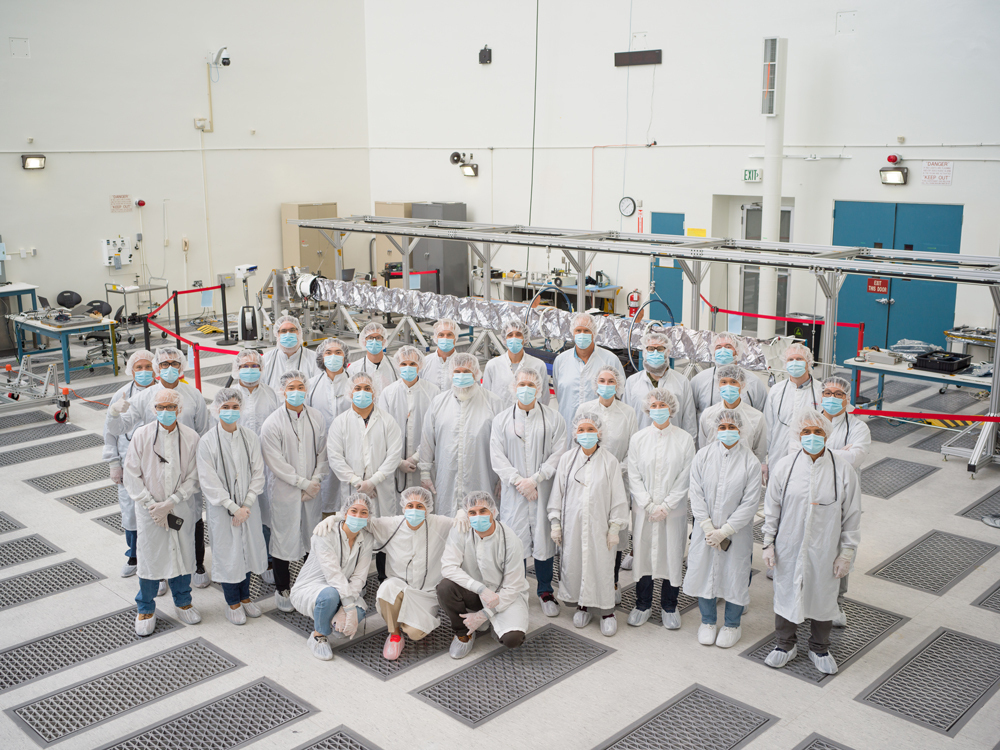Europa Clipper’s magnetometer instrument will measure strength and orientation of magnetic fields during dozens of Europa flybys. Compasses and magnetometers can both detect magnetic fields. But scientific magnetometers are far more sensitive and precise. They allow scientists to accurately measure magnetic fields, and study how they vary with time and location.
The magnetometer boom will be approximately 28 feet (8.5 meters) long, with three fluxgate sensors. To fit aboard the rocket, the boom will be stowed in a canister. It will deploy to its full length in the days after launch. The magnetometer should allow scientists to confirm the existence of Europa’s ocean, and measure its depth and salinity. The instrument will also measure the ice shell’s thickness.
How It Works
Jupiter rotates once every 10 hours, and its magnetic field spins right along with it. The magnetic field whips high-energy plasma along at almost the same rate. The plasma distorts the magnetic field near Europa, as does the spacecraft itself, and this affects magnetometer data.
But other science instruments will study plasma around Europa and learn how it affects the magnetic field. Engineers have modeled how the spacecraft will distort the magnetic field. The magnetometer team will remove those factors from their data to get a clearer and more accurate picture of Europa’s magnetic field. “What we want to extract is the field generated in Europa. That’s what we’re after,” said Margaret Kivelson, magnetometer team leader and a space physicist at UCLA and the University of Michigan.
How We'll Use It“I’m just blown away by the quality of the people on this project.”
How We'll Use It
Europa doesn’t independently generate its own magnetic field. But time-variations of Jupiter’s magnetic field induce Europa to produce one, probably via electric currents flowing in a salty ocean beneath Europa’s ice. The magnetometer should allow scientists to confirm the ocean’s existence, and measure its depth and salinity as well as the ice shell’s thickness.
If Europa has an ocean, the thickness of the moon’s ice shell is critical to the ocean’s possible habitability. High-energy radiation alters Europa’s surface compounds. Thinner ice improves the odds that those surface compounds travel through the ice to the ocean. It would also enable ocean material to reach the surface more easily to be altered by Jupiter radiation before again migrating back to the ocean.
Meet the TeamMeet the Team

“One of the things that I value is the opportunity to work with this fantastic team during the building, testing, and calibration planning for the magnetometer,” Kivelson said.
“It’s very nice to work so well between the engineering team and the science team.”
University of Michigan space physicist Xianzhe Jia is deputy team lead for the magnetometer. He agrees with Kivelson’s sentiment. “The engineering team approached the science team for our input about where to place the sensors on the magnetometer boom. They keep coming back to us to keep us informed. It’s a very close relationship,” Jia said. “It’s very nice to work well between the engineering team and the science team,” he said. “Margy [Kivelson] and I are both very pleased about the nice relationship between the teams. And Margy is very open and listens to me and other team members.”


